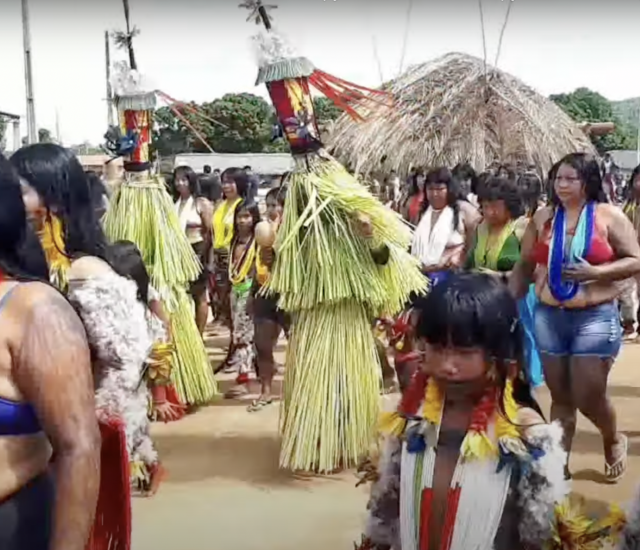Forró is a very distinct music genre from the Northeast of Brazil. Its origins date back to the 19th century, when its first balls took place in the state of Pernambuco, borrowing influences from Portugal, Galicia and indigenous dancing traditions, as it is believed. Its first boom was in the 1950’s, featuring prominent figures like Luiz Gonzaga, and shortly after that, with the intense migration flow from the Northeast to other regions, forró spread its popularity throughout the country. Even though its accordion, triangle and zabumba (traditional brazilian drums) basis have a nostalgic feeling attached to it because of the historical time the genre first flourished, unlike lots of traditional music, forró actually managed to maintain itself as a favorite genre amongst Brazilian hearts all throughout the second half of the 20th century until today, reinventing itself and staying up to date. And, like many other Brazilian music genres, dancing plays a very important part in it.
In Brazi Forró works as a tool for marginalized peoples to express their culture. The musical genre was born in one of the poorest regions of the country, the Northeast. Understanding the political role of the musical genre within Brazilian society, a parallel can be created between the marginalized culture of the Brazilian Northeast and the rhythmic manifestations of the indigenous populations of the same region. Forró assumes a dual role of resistance and representation, since it uses a marginalized rhythm to express its dissatisfaction about the problems faced by marginalized indigenous populations in Brazil. The relationship is so evident that similarities were found between the dance genre and Toré – an indigenous celebration where at a given ritualistic moment individuals drag their feet on the ground, as is done in Forró.
A group of indigenous people from Metyktire, a village in the Kapot Jarinã indigenous reserve located in the brazilian state of Mato Grosso, produced a very interesting song, accompanied by a rich music video.
Forró NB - Arym kam boj
We watch different day-to-day scenes of the community go by, such as people going fishing, doing traditional body painting and kids running and dancing. The song is a very contemporary style of forró that incorporates the use of autotune and electronic drums. The students of the village’s school participated both in the footage and in the production team, and everything but the words “Forró NB” is sung in their own Kayapó dialect, under the title Arym Kam Boj.
In the region between the northeast of the state of Mato Grosso and the south of Tocantins, the group Garotos Apyãwa (Apyãwa Boys) stands out. The musical group consists of two main vocalists (Joílson and Adilson), a backing vocalist (Deidson) and three dancers (Fabiola, Kislene and Carmem). All members are from the Tapirapé ethnic group — or, in their own language, Apyãwa — one of the indigenous populations of the region. According to vocalist Joilson, the inspiration for the formation of the band was due to the fact that, despite enjoying the musical genre, he realized that the Portuguese language was overlapping the original language of his village.
Forró Garotos Apyãwav - O Batidão Diferente
Thus, as a way of contributing to their community, the group uses mixed languages to compose their melodies, sometimes singing in Portuguese, sometimes in Tapirapé, and sometimes in both languages. In this sense, in addition to following the current booklet of the popular genre of the Northeast, the Garotos Apyãwa also sing about the arrival of European invaders to the territory that is now called Brazil. In this sense, the importance of the group becomes even more evident when the context in which it is inserted is analyzed: its territory, legally demarcated, has been the scene of land conflicts and invasions by loggers since the 1990s. In view of this, the group’s songs serve as pedagogical material in the village’s classes, as the vocalist Joilson says, who is also a teacher and teaches the language in the territory where he lives.
The authors :
Sérgio Godinho is Brazilian, 20 years old and studies International Relations at the University of Brasília (UnB), in the country’s capital. He is currently an exchange student at Sciences Po Paris Campus Reims.
Raquel Guimarães was born and raised in São Paulo, Brazil. She is 21 years old and studies Public Administration at Fundação Getulio Vargas, where acted as president of the student magazine for one year. She is now doing an exchange program in France with Sciences Po.


